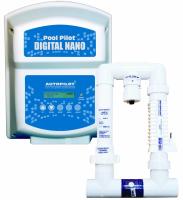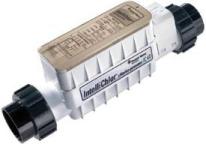
Should I buy a Salt Chlorination System (Chlorinator) for my pool?
Why do people purchase salt chlorinators?

Autopilot Nano
Who should buy a Salt Chlorine generator?
For owners of vinyl and especially gunite this is a very different story. There ARE concrete pool owners in the south who absolutely spend $2000 per year on chlorine. For that owner it makes sense to spend $1800 or so to NOT spend $2000 per year. For a vinyl owner that's spending $400 or more on chlorine in the Midwest that may make sense too. Five year return on investment plus the convenience isn't too bad. But again this is not maintenance free! It's just less maintenance.
Who Should not have a salt chlorine generator?
The owner with well water. Plain and simple. It complicates the water chemistry and frankly becomes a net loss. The purpose of chlorine generators is to help make the ownership experience easier and streamlined. Well water coupled with a salt generator does the opposite. The reason may not be so apparent.

Pentair IntelliChlor
To be fair the TDS can be managed through SOME chemicals like metal out and other sequestering agents. The real way however is to drain some pool water and replace it. Doable? Yes but isn't the reason we are talking about a salt system is for lower maintenance and our headaches not add to it?
Read more on Salt CL systems and how they work at:
What is a Salt Pool?How To Take Care of a Fiberglass Salt Pool
Salt Water Chlorine Generators: History, Types, Operation, and Considerations
Pool Article Categories:
Copyright Luxury Pools and Living 2005-2026
Cookie Policy | Privacy Policy